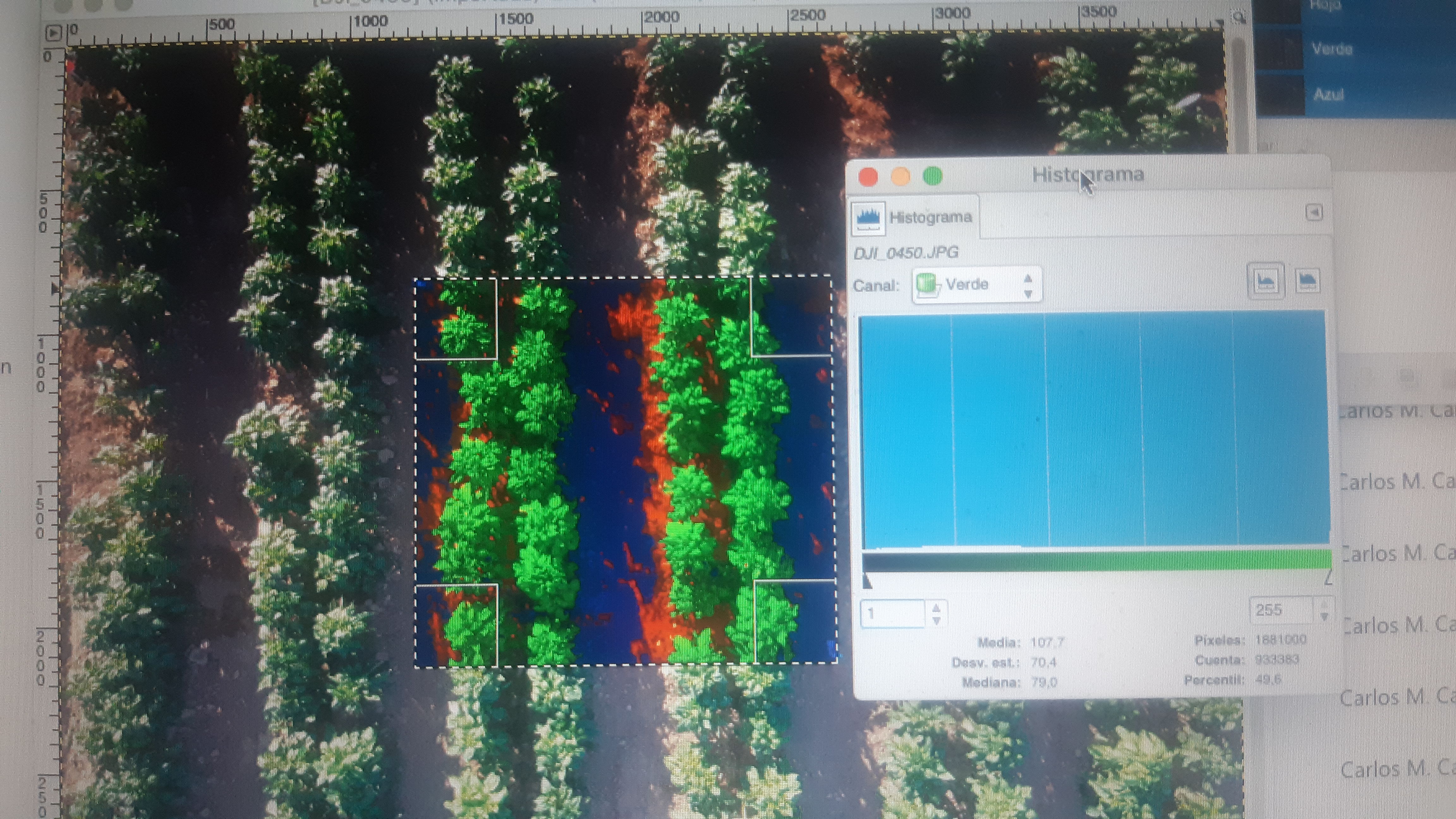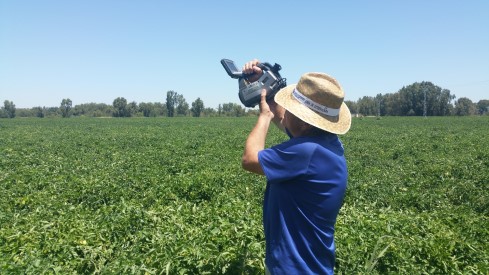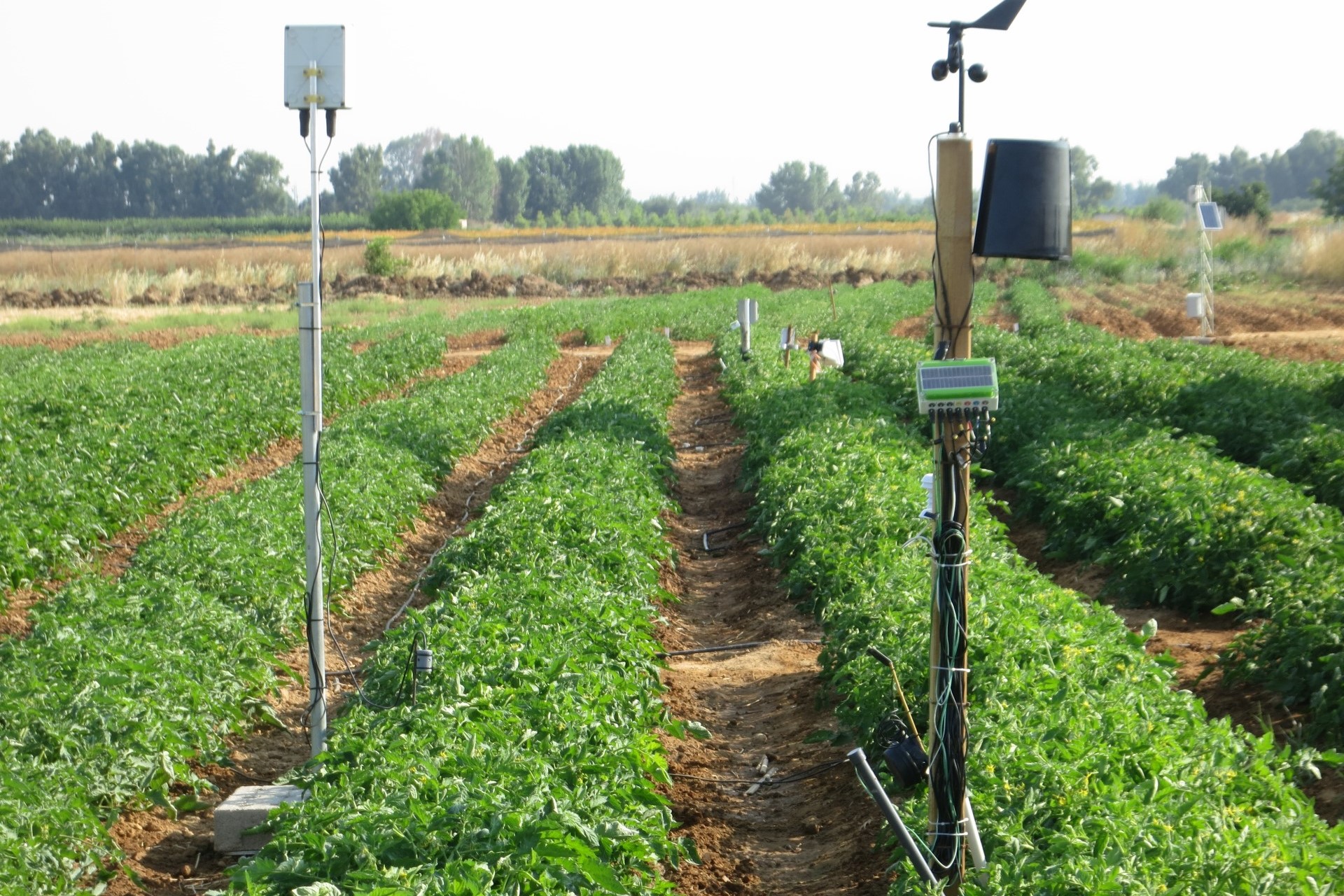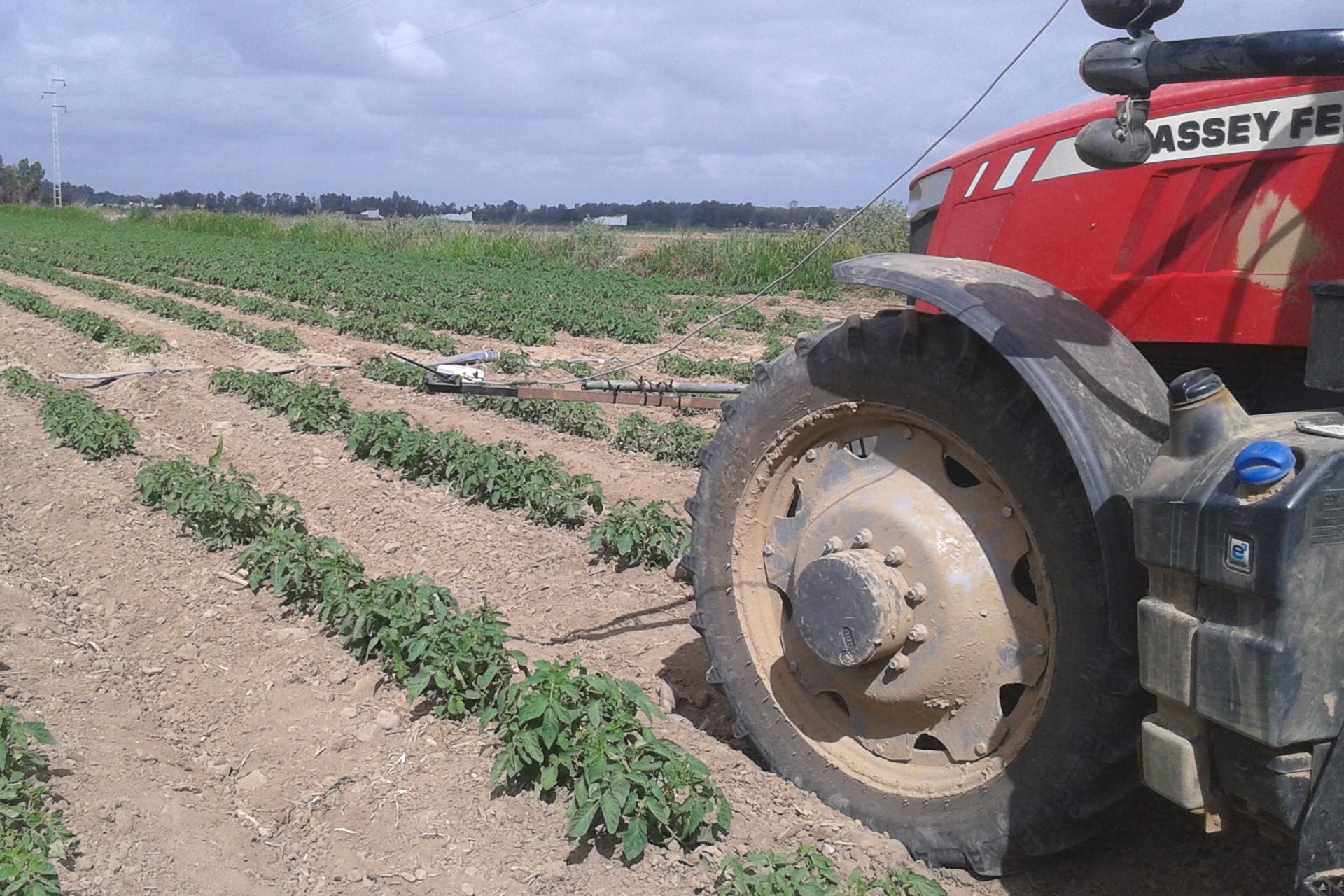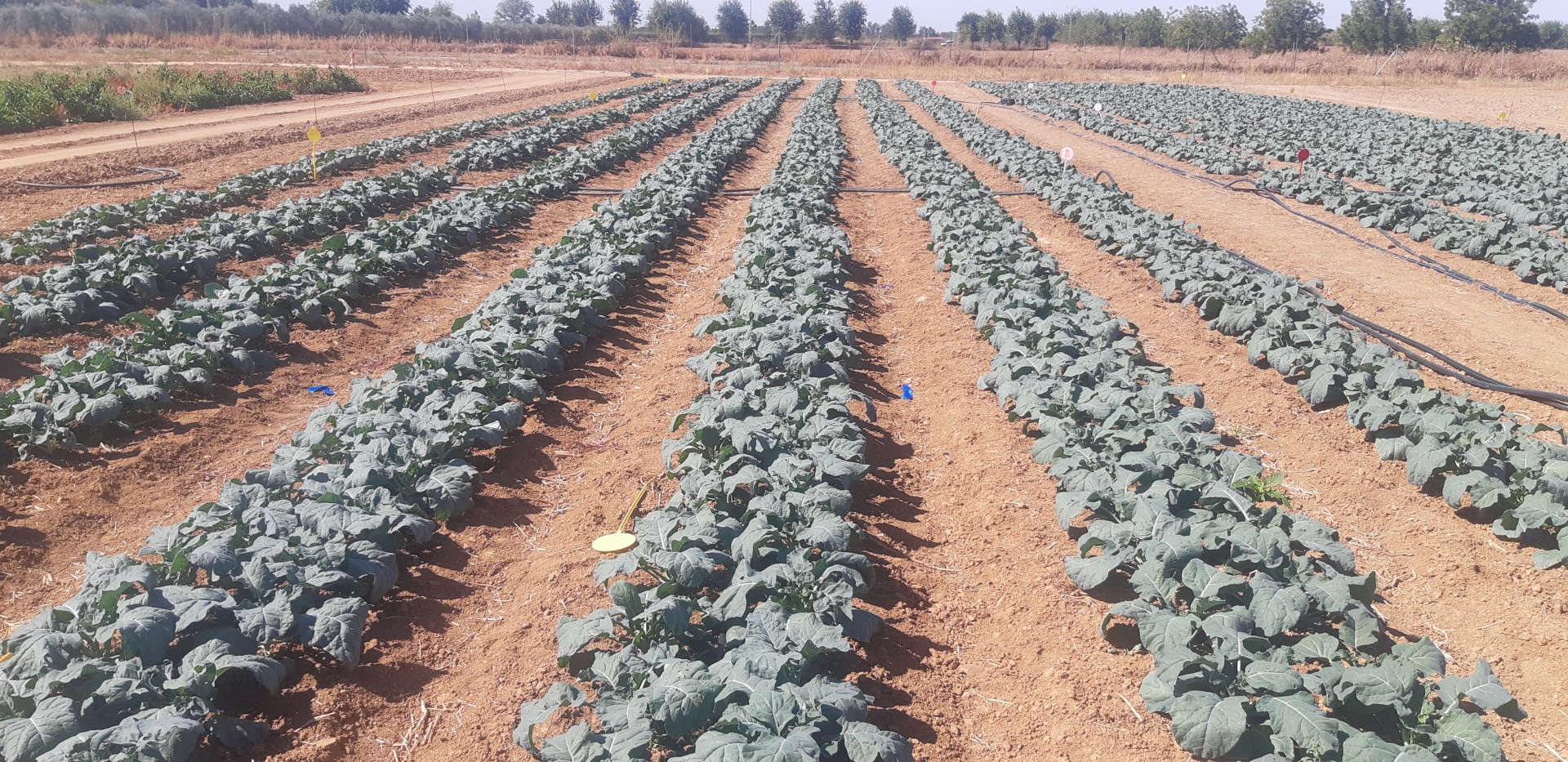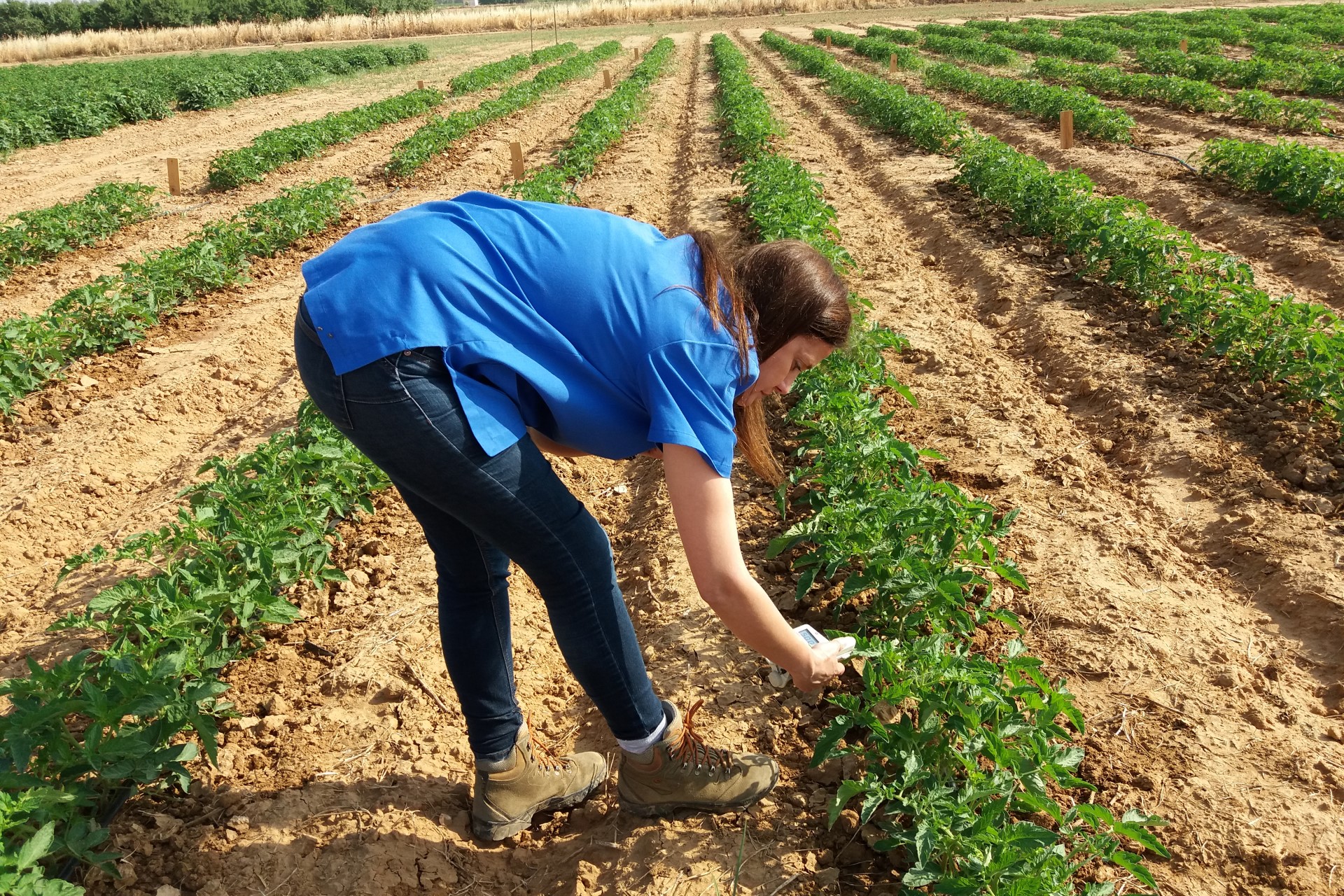Vegetable crops
 General information
General information
Industrial tomatoes are the main vegetable crop in Extremadura, representing 72% of the vegetable crop areas, followed by broccoli with 14% (4,520 hectares), with the remainder being crops spreading over under 2,000 hectares such as peppers, aubergines, cherry tomatoes and melon.
The tomato crop area in Extremadura has remained quite stable for the last 20 years, spreading across 15,000 to 30,000 hectares, while in the last few years it has remained at 23,000 hectares. Irrigation is essential for the development of this crop with commercial purposes and water is one of the main factors in production, being determinant not only for productivity, but also for the quality of the harvest. The modernisation of Extremadura’s irrigation systems has been a major driver for the promotion of the average production in the fertile plains of the Guadiana River –which was 50,000 Kg/ha in 1996 and has reached yields of over 90,000 kg/ha. This strong development has been due to the change from a gravity irrigation system to a localised drip one. The production of industrial tomatoes is mainly situated in the fertile plains of the Guadiana River. This is a spring-summer crop (April to September) and its growing cycles determine the operations of the transformation industry (from middle of July to end of September).
Interest in broccoli as a crop has increased exponentially in the latest 10-15 years, and the areas occupied by this vegetable have increased by 10, currently ranging between 4,000 and 6,000 hectares depending on the year. This means approximately 20% of the total area in Spain. Broccoli production is mainly situated in the fertile low plains of the Guadiana River, although in the last few years it has also expanded to the fertile high plains of the Guadiana River. Its growing cycle is mainly Autumn-Winter, although spring production is also possible.
Peppers are mainly grown in the North of Caceres and occupy an area of approximately 1,500 hectares. Its growth serves mainly an industrial purpose, which is the production of paprika. In recent years, the pepper growing industry has been promoted for its use mainly in the frozen foods industry. The pepper fields grown for this purpose are mainly the fertile low plains of the Guadiana River, with areas reaching 500 hectares.
 Crop requirements
Crop requirements
From a technical point of view, there are several issues hindering profitability and competitiveness of vegetable crops in the region.
Efficient management of irrigation.
Efficient use of fertilisers with special attention to nitrogenous fertilisers.
Efficient management of pests and diseases.
Improvement of productivity and crop quality.
Adaptation of crops to climate change.
Physiopathies due to extreme climate events.
Maintenance of soil fertility.
In the case of the pepper and broccoli, adaptation of the crop to mechanical harvesting systems.
The promotion of efficient, sustainable and profitable growing systems in general, which can face any future scenarios imposed by climate change and yield healthy food products with a reduced carbon footprint and even acting as sinks, prove to be urgent matters. Should the current scientific knowledge and advanced technologies be applied to agriculture, they could prove key in attaining the above objectives. In this sense, there are various lines of associated research being promoted by CICYTEX in cooperation with other public agencies and the University of Extremadura. These are tests and studies focusing on irrigation and fertilisation strategies, crop quality, integration of agricultural precision techniques, growing models and systems that support the decision making of irrigation and fertilisation matters.

Measurement of water status in industrial tomatoes with a portable pressure chamber in a commercial plot


Measurement of water status in industrial tomatoes with a portable pressure chamber in a commercial plot


Sensors for the characterization of the hydric state and development of cultivation in tomato seedlings in the greenhouse
 Calculation of water requirements
Calculation of water requirements
Irrigation is an essential factor for the development of vegetable crops and their ongoing profitability; however, irrigation needs to be adjusted adequately to the requirements of each crop at each of their phenological cycles. An incorrect supply of water could derive in inefficient irrigation and in situations of excessive or defective water supply, thus causing a loss in production or in the quality of the crops. Work has been conducted in this line to adjust the water requirements of vegetable crops, especially in the case of tomatoes, both in experimental plots and full growing crops, with adjustments based on information provided by satellite technology.
Research on irrigation requirements conducted at CICYTEX has been very diverse. Initially gravity irrigation was under study, addressing very basic aspects, such as the calculation of water requirements, and practical issues, such as how irrigation frequency and volume can impact production and quality at every event of water supply, the date of the last irrigation event, etc. The arrival of drip irrigation made the work easier and helped schedule irrigation events according to the evolution of the water requirements throughout the crop’s life cycle. It also helped design irrigation strategies to change the characteristics of the crop and determine its organoleptic and functional attributes, antioxidant and aromatic composition, and sugar content.
 Fertilisation
Fertilisation
As with irrigation, an adequate level of fertilisation in terms of the dosage of each fertiliser as well as the time of application, are essential to guarantee optimal performance and quality in vegetable crops. Specifically, nitrogenous fertilisation is fundamental to achieve high levels of production; however, excessive fertilisation or incorrect application of the fertiliser increases crop costs and causes severe environmental damage (water contamination and greenhouse gas emissions). CICYTEX proposes to provide the tools for the nutritional diagnosis of vegetable crops and adapted fertilisation strategies in order to improve efficiency in the use of fertilisers. Within this line we have worked on the production of industrial tomato, broccoli, pepper, cauliflower, melon and lettuce.
 Studies on plant material in vegetable species
Studies on plant material in vegetable species
In the knowledge of the importance of selecting the correct variety, CICYTEX has been performing comparison testing of the behaviour of commercial varieties of vegetable crops such as broccoli, cabbage, cauliflower and lettuce. These tests provide relevant information on the adaptation of the crops to the growing conditions of the area, term of the crop cycle, pest and disease incidence, production, quality as well as adaptation to the different process timings.
 Precision agriculture and models
Precision agriculture and models
In this line, we work on the application of precision agricultural techniques and sensor systems to help monitor the crop and manage its irrigation and fertilisation needs, adapting the recommendations to the various characteristics of the plot. Focus is made on the adjustment of various methods to allow the monitoring of the water and nutritional status of the crop during its development, establishing reference values in the event of excess and defect situations. Other interesting aspects are irrigation automation and the use of models simulating vegetable crops for the management of irrigation and fertilisation.




